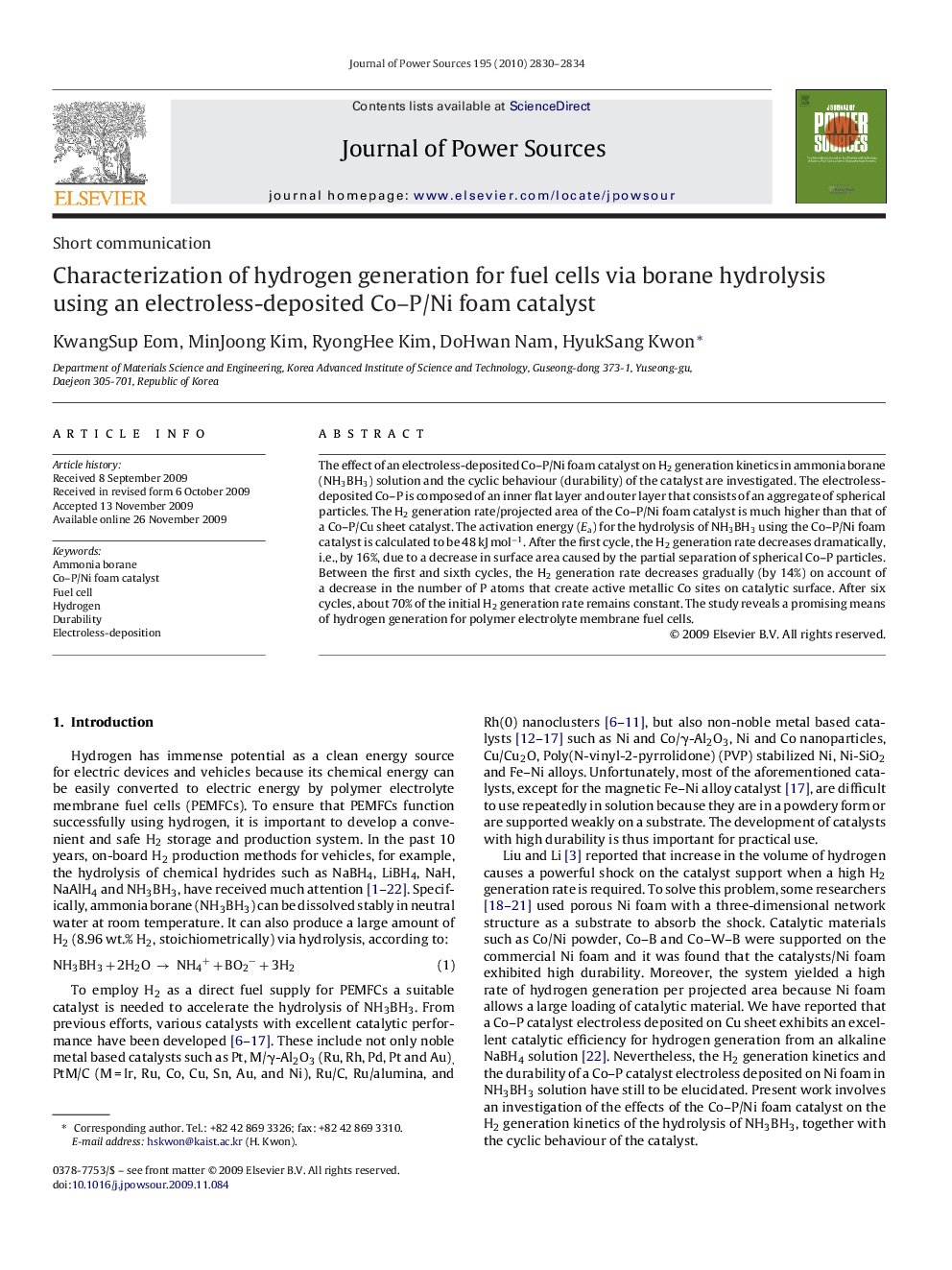| Article ID | Journal | Published Year | Pages | File Type |
|---|---|---|---|---|
| 1285040 | Journal of Power Sources | 2010 | 5 Pages |
The effect of an electroless-deposited Co–P/Ni foam catalyst on H2 generation kinetics in ammonia borane (NH3BH3) solution and the cyclic behaviour (durability) of the catalyst are investigated. The electroless-deposited Co–P is composed of an inner flat layer and outer layer that consists of an aggregate of spherical particles. The H2 generation rate/projected area of the Co–P/Ni foam catalyst is much higher than that of a Co–P/Cu sheet catalyst. The activation energy (Ea) for the hydrolysis of NH3BH3 using the Co–P/Ni foam catalyst is calculated to be 48 kJ mol−1. After the first cycle, the H2 generation rate decreases dramatically, i.e., by 16%, due to a decrease in surface area caused by the partial separation of spherical Co–P particles. Between the first and sixth cycles, the H2 generation rate decreases gradually (by 14%) on account of a decrease in the number of P atoms that create active metallic Co sites on catalytic surface. After six cycles, about 70% of the initial H2 generation rate remains constant. The study reveals a promising means of hydrogen generation for polymer electrolyte membrane fuel cells.
